The Ocean’s Living Jewel: Unveiling the Mahi Mahi
Deep beneath the shimmering surface of the world’s tropical and subtropical oceans swims a creature of breathtaking beauty and incredible speed: the Mahi Mahi. Known by many names, including Dorado and Dolphinfish, this magnificent pelagic fish is a true marvel of marine life, captivating scientists, anglers, and seafood enthusiasts alike. Its vibrant colors, acrobatic leaps, and crucial role in the marine ecosystem make it a subject of endless fascination. Join us as we dive into the dynamic world of the Mahi Mahi, exploring its life from the open ocean to its interactions with human culture.
A Splash of Color and Speed: What is a Mahi Mahi?
The Mahi Mahi, scientifically known as Coryphaena hippurus, is instantly recognizable for its striking appearance. These fish boast a dazzling array of iridescent colors, typically a brilliant golden-yellow on the sides and belly, transitioning to electric blues and greens on the back and fins. This spectacular coloration, however, is fleeting, often fading rapidly after the fish is removed from the water, a phenomenon that only adds to its mystique. Males are distinguished by a prominent, blunt forehead, giving them a more imposing profile than the females, which have a rounder head.
Mahi Mahi are built for speed and agility. Their streamlined bodies, deeply forked caudal (tail) fins, and dorsal fins extending nearly the entire length of their back are all adaptations for life in the open ocean. They can reach impressive sizes, often exceeding 30 pounds, with some individuals growing over 6 feet long and weighing more than 80 pounds, though such giants are less common. Their rapid growth rate is a testament to their efficiency as predators and their short, intense lives.

Where the Wild Things Are: Mahi Mahi Habitat
Mahi Mahi are true wanderers of the warm seas. Their primary habitat spans the tropical and subtropical zones of the Atlantic, Pacific, and Indian Oceans. These pelagic fish prefer the open ocean, far from coastal reefs, thriving in surface waters where temperatures typically range from 70 to 85 degrees Fahrenheit (21 to 29 degrees Celsius). They are often found in association with floating objects, such as sargassum weed lines, debris, or even man-made Fish Aggregating Devices (FADs). These floating structures provide shelter and attract smaller baitfish, creating a ready-made hunting ground for the opportunistic Mahi Mahi.
Their distribution is not static. Mahi Mahi undertake extensive seasonal migrations, following warm currents and abundant food sources. For instance, populations in the Atlantic may move north during warmer months and south as temperatures drop. This migratory behavior makes them a truly global species, encountered by mariners and anglers across vast oceanic expanses. For an animal lover hoping to spot one in the wild, the best bet is to venture into open, warm ocean waters, particularly around floating structures or current breaks where baitfish congregate.

A Hunter’s Feast: What Mahi Mahi Eat
As apex predators in their niche, Mahi Mahi are voracious and opportunistic carnivores. Their diet is incredibly diverse, reflecting the abundance of prey in the open ocean. They are known to consume a wide variety of smaller fish, including flying fish, mackerel, sardines, and juvenile tuna. Squid and crustaceans also form a significant part of their diet. Their keen eyesight and incredible speed allow them to pursue and capture fast-moving prey with remarkable efficiency.
Mahi Mahi often hunt in schools, using cooperative strategies to herd baitfish. Their association with floating objects is not just for shelter, but also a clever hunting tactic. The concentration of smaller marine life around these structures provides a constant buffet. This adaptability in diet and hunting strategy is a key factor in their success and widespread distribution across the world’s oceans.
Life in the Fast Lane: Mahi Mahi Reproduction
The life cycle of the Mahi Mahi is characterized by rapid growth and a relatively short lifespan, typically only 4 to 5 years. This necessitates a highly efficient reproductive strategy. Mahi Mahi are prolific spawners, reaching sexual maturity at a young age, often within their first year. Spawning occurs year-round in warm tropical waters, with peaks during certain seasons depending on the region. Females can spawn multiple times a year, releasing hundreds of thousands of eggs during each event.
The eggs are pelagic, meaning they float freely in the open ocean, drifting with currents. Larval Mahi Mahi are tiny and vulnerable, but they grow at an astonishing rate, quickly developing into miniature versions of the adults. This rapid turnover of generations allows Mahi Mahi populations to rebound quickly, a crucial trait for a species that is heavily fished and faces numerous natural predators in the vast ocean.
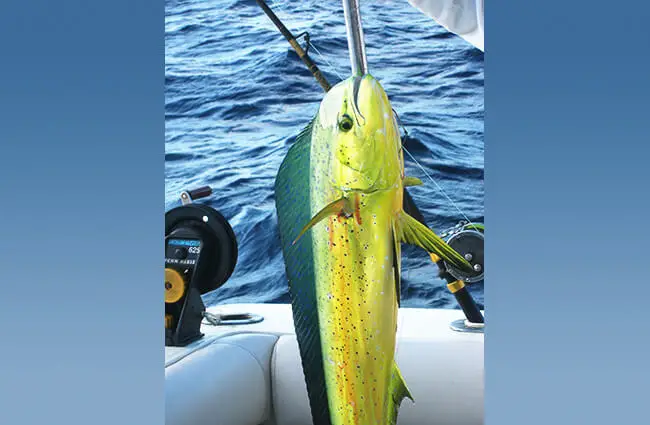
Diving Deeper: The Mahi Mahi’s World
Evolutionary Journey: A Glimpse into the Past
The Mahi Mahi belongs to the family Coryphaenidae, a small but distinctive group of ray-finned fish. While their exact evolutionary lineage is still a subject of ongoing research, their adaptations clearly point to a long history of life in the open ocean. Their streamlined body plan, powerful musculature, and specialized fins are all hallmarks of highly evolved pelagic predators. These features have been refined over millennia, allowing them to thrive in a dynamic and often challenging environment.
Their rapid growth and reproductive strategies are also evolutionary responses to a high-mortality environment, ensuring the continuation of the species despite predation and other oceanic pressures. Studying the genetic makeup of Mahi Mahi can provide further insights into their dispersal patterns, population connectivity, and how they have adapted to changing ocean conditions throughout their evolutionary history.
An Ocean Architect: Mahi Mahi in the Ecosystem
Mahi Mahi play a vital role in the marine food web as both predators and prey. As active hunters, they help regulate populations of smaller pelagic fish and invertebrates, preventing any single species from dominating and thus contributing to the overall biodiversity and health of the ecosystem. Their presence indicates a healthy and productive open ocean environment, rich in the baitfish they consume.
Conversely, Mahi Mahi themselves are a crucial food source for larger marine predators, including sharks, marlin, and even some species of whales. Their fast growth and abundance make them an important link in the transfer of energy through the trophic levels of the open ocean. Without Mahi Mahi, the delicate balance of these complex food webs would be significantly altered, impacting numerous other species up and down the chain.

Mahi Mahi and Humanity: A Complex Relationship
The interaction between Mahi Mahi and humans is multifaceted, encompassing cultural significance, economic importance, and conservation challenges.
-
Cultural Significance:
- Culinary Delight: Mahi Mahi is highly prized as a food fish around the world. Its firm, white, flaky flesh and mild flavor make it a favorite in many cuisines, from Hawaiian poke to Caribbean grilled dishes. Its popularity has led to its widespread availability in markets and restaurants globally.
- Recreational Fishing: For sport fishermen, the Mahi Mahi is an iconic target. Its incredible fighting spirit, acrobatic leaps, and stunning beauty make it an exhilarating catch. The thrill of pursuing these powerful fish contributes significantly to coastal tourism and recreational economies.
- Naming Origins: The name “Mahi Mahi” comes from the Hawaiian language, meaning “strong strong,” a fitting description for this powerful fish. In Spanish-speaking regions, it is known as “Dorado,” meaning “golden,” referring to its brilliant coloration. The common name “Dolphinfish” can sometimes cause confusion with marine mammals, but it refers to the fish’s porpoise-like head shape.
-
Human Interaction:
- Commercial Fishing: Mahi Mahi are a significant commercial fishery target, caught using various methods including longlines, trolling, and purse seines. Their rapid growth and relatively short lifespan allow for sustainable harvesting if managed properly.
- Recreational Fishing and Conservation: Many recreational anglers practice catch and release to support conservation efforts, especially for smaller individuals. Fisheries management bodies implement regulations such as size limits and bag limits to ensure the long-term health of Mahi Mahi populations.
- Environmental Impact: Like many marine species, Mahi Mahi are susceptible to the impacts of climate change, including ocean warming and acidification, which can affect their prey availability and habitat. Pollution, particularly plastic debris, also poses a threat, as they may ingest microplastics or become entangled in larger pieces.

Encountering Mahi Mahi in the Wild: A Guide for Enthusiasts
For the animal lover or aspiring zoologist eager to observe Mahi Mahi in their natural habitat, direct encounters are typically from a boat in open ocean waters. These fish are not found near shorelines where a terrestrial hiker might be, but rather in the vast blue. Here is how one might “encounter” and appreciate them:
-
Where and How to Find One:
- Open Ocean: Mahi Mahi are pelagic, meaning they live in the open sea. They are rarely found in shallow coastal waters.
- Floating Objects: Look for them around sargassum weed lines, floating debris, or FADs. These structures attract baitfish, which in turn attract Mahi Mahi.
- Surface Activity: Keep an eye out for birds diving or baitfish scattering on the surface, as these are often indicators of feeding Mahi Mahi below.
- Color Changes: When excited or feeding, Mahi Mahi can display incredibly vivid color changes, flashing electric blues, greens, and yellows. This can be a spectacular sight from a boat.
-
What to Do if You “Encounter” One (from a boat):
- Observe from a Distance: Maintain a respectful distance to avoid disturbing their natural behavior.
- Appreciate Their Beauty: Take the time to admire their stunning colors and graceful movements.
- Do Not Disturb: Avoid making loud noises or sudden movements that could startle them. If you are not fishing, simply enjoy the rare opportunity to witness these magnificent creatures.
- Photography: If you have a waterproof camera, capture their beauty, but always prioritize observation over intrusive actions.
Caring for Captive Mahi Mahi: A Zookeeper’s Perspective
Keeping Mahi Mahi in captivity presents unique challenges due to their pelagic nature, rapid growth, and high energy levels. For a zookeeper, providing an optimal environment requires specialized knowledge and dedicated care.
-
Challenges of Captivity:
- Tank Size: Mahi Mahi require extremely large, open, circular or oval tanks to accommodate their size and constant swimming. Rectangular tanks with sharp corners can cause stress and injury.
- Water Quality: Maintaining pristine water quality is paramount. This includes precise control of temperature (warm, stable), salinity, pH, and dissolved oxygen levels, mimicking their natural oceanic environment.
- Diet: A specialized diet of high-quality, varied marine fish and squid is essential to meet their high metabolic demands. Supplements may be necessary to ensure complete nutrition.
- Stress Management: As fast-moving, open-ocean fish, Mahi Mahi are highly susceptible to stress in confined environments. Minimizing sudden changes, providing adequate space, and careful handling are crucial.
-
Tasks for a Zookeeper:
- Daily Monitoring: Regular observation of health, behavior, feeding patterns, and any signs of stress or illness.
- Water Parameter Checks: Frequent testing and adjustment of water chemistry to maintain optimal conditions.
- Diet Preparation and Feeding: Preparing and delivering a balanced diet, often involving multiple feedings throughout the day to match their high metabolism.
- Tank Maintenance: Regular cleaning of the exhibit, filtration system checks, and ensuring all equipment is functioning correctly.
- Environmental Enrichment: While challenging for pelagic fish, providing subtle currents or varied feeding locations can offer some stimulation.
-
What to Avoid:
- Overcrowding: Housing too many individuals in a tank can lead to stress, aggression, and poor health.
- Inadequate Tank Size: A tank that is too small will severely limit their natural swimming behavior and lead to chronic stress and physical injury.
- Poor Water Quality: Fluctuations or degradation in water parameters can quickly lead to disease and mortality.
- Sudden Changes: Avoid abrupt changes in lighting, water flow, or tank inhabitants, which can cause significant stress.
- Rough Handling: Any necessary handling must be done with extreme care to prevent injury to their delicate skin and fins.
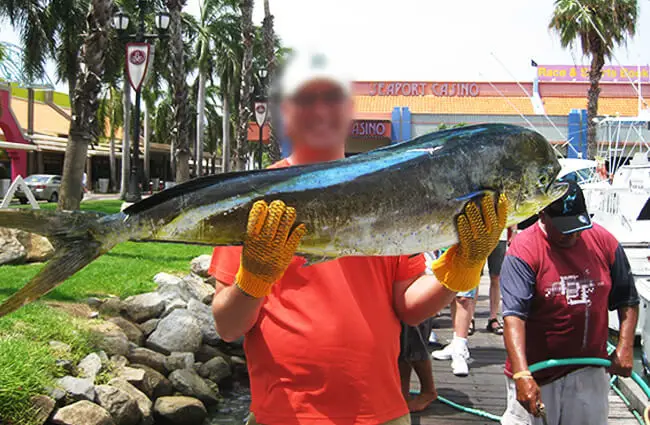
Beyond the Surface: Fascinating Mahi Mahi Facts
The Mahi Mahi is full of surprises. Here is a list of intriguing facts that highlight its unique characteristics:
- Rapid Growth and Short Lifespan: Mahi Mahi are among the fastest-growing fish in the ocean, often reaching full size within a year, but typically living only 4 to 5 years.
- Dramatic Color Changes: Their vibrant, iridescent colors are incredibly dynamic. When excited, fighting, or just caught, they can flash a spectacular array of blues, greens, and yellows. These colors fade almost immediately upon death, often turning to a dull gray or yellow.
- Sexual Dimorphism: Males, known as “bulls,” have a distinctive, blunt, vertical forehead, while females, or “cows,” have a more rounded head.
- Acrobatic Leapers: Mahi Mahi are renowned for their incredible leaping ability, often jumping high out of the water when hooked or pursuing prey.
- Association with Floating Objects: They have a strong affinity for floating debris, sargassum weed lines, and FADs, using them for shelter and as hunting grounds.
- Incredible Speed: While not the absolute fastest fish, they are exceptionally quick and agile, capable of bursts of speed to catch their prey.
- “Dolphin” Confusion: The common name “Dolphinfish” often leads to confusion with marine mammals (dolphins). It is important to remember that Mahi Mahi are fish, not mammals.
- Prolific Spawners: Females can spawn multiple times a year, releasing hundreds of thousands of eggs, contributing to their rapid population turnover.
- Opportunistic Predators: Their diet is incredibly varied, reflecting their adaptability as hunters in the open ocean.
Conclusion: The Enduring Allure of the Mahi Mahi
From its dazzling colors and lightning speed to its vital role in the marine ecosystem, the Mahi Mahi is a truly remarkable creature of the deep. Its story is one of adaptation, survival, and a complex relationship with humanity. Whether admired by an aspiring zoologist, pursued by a sport fisherman, or savored on a dinner plate, the Mahi Mahi leaves an indelible impression. Understanding and appreciating this magnificent fish is a step towards ensuring its continued presence in our oceans for generations to come, a vibrant testament to the wonders of marine life.

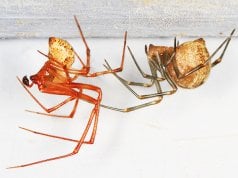


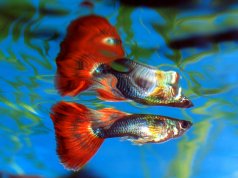
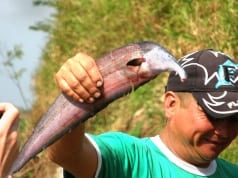
![Red Angus Closeup of a beautiful Red Angus cowPhoto by: U.S. Department of Agriculture [pubic domain]https://creativecommons.org/licenses/by/2.0/](https://animals.net/wp-content/uploads/2020/03/Red-Angus-4-100x75.jpg)

